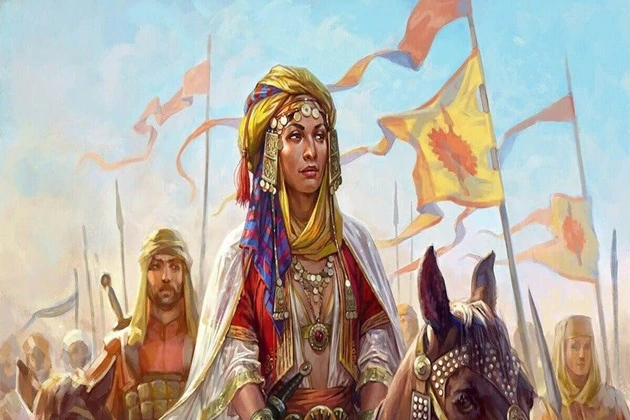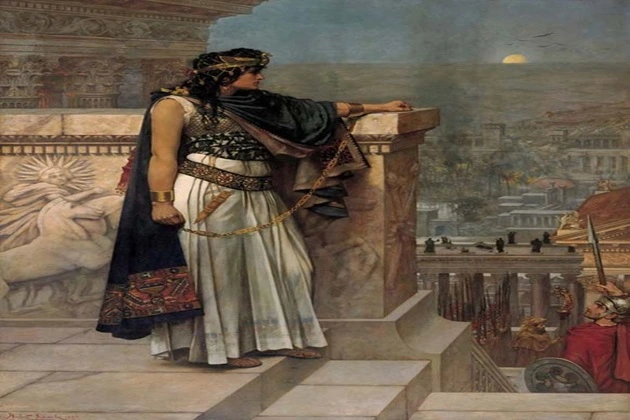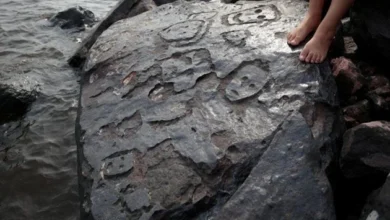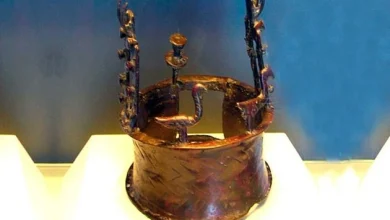What makes scientists believe the legendary Arab Mafia lord existed?

This outstanding woman is recognized as one of the most famous ancient Arab queens, although no archaeological evidence has confirmed her life. Historians do not doubt that it existed in reality. Warrior Queen Mavia is one of the key figures of the ancient “desert sands.” It is known that she was more powerful than many men and inspired ancient Arab women. Her story was preserved in songs and oral traditions, and with the help of this information, researchers were able to reconstruct her probable biography.
Her enemies had recklessly underestimated her

Many centuries ago, the deserts belonging to Arab tribes were ruled by many leaders unknown to the modern world. The biographies of these forgotten kings and queens have been lost in world history, like grains of sand in endless sands. Therefore, every famous person of that era is an invaluable find. The thing is that most ordinary people in those days were illiterate, so no one could write down their stories about the rulers, which they passed on to their children and grandchildren. Fortunately, some of their memories were preserved in folk songs and oral legends, which were later recorded. One of these stories is the legend of the Mafia Queen, which is famous in the Arab world.
Her Arabic name was Mawiyya, but she is known as Mafia in English. She is believed to have been the daughter of a representative of the Tanukhid (a confederation of Arabian tribes sometimes identified with the Saracens). Her father lost the support of his Arab people and migrated to the northern regions of the Arabian Peninsula.
Mawiyya, married al-Hawar – the king of the Tanukh Tanuh tribe, who ruled in 375 AD. The Mafia became the co-ruler of her husband, and her tribe demanded an uprising against the Roman Empire. She had a tenacious mind and incredible cunning. Visit. A F R I N I K . C O M . For the full article. When her husband died, Roman Emperor Valens believed that conquering and converting the Mafia people to Christianity would be a simple task. However, the Mafia, who lived in Aleppo then, decided to retreat into the desert, significantly increasing its chances of defeating the enemy. After that, she repeatedly fought with the Roman troops and won.
Perhaps she was a Christian
Some researchers suggest that by the time of the confrontation with Rome, the Arab ruler could have already become a Christian. It is based on a legend about a meeting between the queen and an Orthodox monk who spent some time with her and converted her to Christianity. However, Roman writers questioned this story, suggesting that the legend of her conversion may have been created much later and that she was a pagan.
At the same time, Islamic scholar Irfan Shahid believes that an inscription from 425 A.D. found near Anasarta (Syria) indicates that this legendary queen contributed to local Christianity. The text praises a woman named Mafia and claims that she built the martyrium, or building, in honor of St. Thomas. Although the name Mafia was not so rare in those days, Shahid believes that the inscription’s date and its laudatory tone correspond to the image of the warrior queen.
There is also evidence that the legendary tsarina made Moses the first Arab bishop, a saint sent to her people from Rome.
A beautiful horsewoman

Mafia life mostly took place in the desert sands. Per preserved oral traditions, the ruler spent most of her time riding a horse and on the battlefields.
In addition to the battles with the Romans, the warrior is famous for her successful campaigns in Phoenicia and Palestine. It was said that her cavalry possessed terrifying enemy power, which ensured a dominant position on the battlefield. The Mafia itself rode very well and was a wonderful fighter.
Stories have been passed down from generation to generation of how, without any mercy, she killed countless enemies who disrespected her because of her gender. At the beginning of her reign, many male rulers did not take her seriously, naively hoping to conquer her lands easily. Still, over time, Mavia became such a force in the Arab world that she had to be reckoned with in the Mediterranean.
Why is there no written evidence

Historians find it challenging to find primary historical references to Mavia. Many of the mentions of the great queen are mixed with the stories of other rulers, including, for example, the legendary achievements of another famous woman—Zenobia of Palmyra. Thus, the variants of Mavia’s alleged biography vary slightly.
Scientists have analyzed hundreds of texts that could mention the warrior, but no artifacts related to this mysterious queen have been found. Researcher De Vries notes that the very nomadic nature of the Saracens implies minimal chances of finding archaeological evidence. “In your search for the material world of Mavia, you may have to think about tents rather than palaces,” he explains. “In general, the material evidence of the local Arab culture of this period is ephemeral, and they are usually not presented in the form of texts.”
However, it is believed that the Arab queen Mavia died in east of Aleppo. Most researchers agree that her death occurred in 425 AD, about a hundred years after the death of the great ruler Zenobia of Palmyra.
Many reputable historians agree that Queen Mavia did exist because there are many oral traditions, poems, and songs about her, and there is no smoke without fire. She is believed to have been a powerful ruler of the Arab world and one of the most influential women in the ancient history of these lands.




